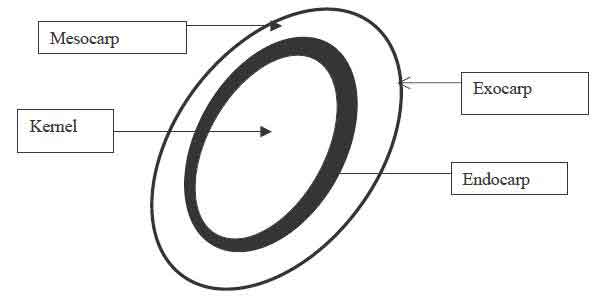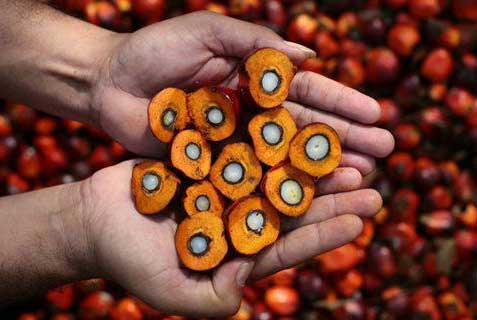It is generally agreed that the Oil Palm (Elaeis guineensis) originated in the tropical rain forest region of West Africa. The main belt runs through the southern latitudes of Cameroon, Côte d’ Ivoire, Ghana, Liberia, Nigeria, Sierra Leone, Togo and into the equatorial region of Angola and the Congo. Processing oil palm fruits for edible oil has been practiced in Africa for thousands of years, and the oil produced, highly coloured and flavoured, is an essential ingredient in much of the traditional West African cuisine. The traditional process is simple, but tedious and inefficient.
During the 14th to 17th centuries some palm fruits were taken to the Americas and from there to the Far East. The plant appears to have thrived better in the Far East, thus providing the largest commercial production of an economic crop far removed from its centre of origin.
Palm oil is rich in carotenoids, (pigments found in plants and animals) from which it derives its deep red colour, and the major component of its glycerides is the saturated fatty acid palmitic; hence it is a viscous semi-solid, even at tropical ambients, and a solid fat in temperate climates.
Because of its economic importance as an high-yielding source of edible and technical oils, the oil palm is now grown as a plantation crop in most countries with high rainfall (minimum 1 600 mm/yr) in tropical climates within 10°of the equator. The palm bears its fruit in bunches varying in weight from 10 to 40 kg. The individual fruit, ranging from 6 to 20 gm, are made up of an outer skin (the exocarp), a pulp (mesocarp) containing the palm oil in a fibrous matrix; a central nut consisting of a shell (endocarp); and the kernel, which itself contains an oil, quite different to palm oil, resembling coconut oil.


The wild oil palm groves of Central and West Africa consists mainly of a thick-shelled variety with a thin mesocarp, called Dura. Breeding work, particularly crosses between Dura and a shell-less variety (Pisifera), have led to the development of a hybrid with a much thicker mesocarp and a thinner shell, termed Tenera. All breeding and planting programs now use this latter type, the fruits of which have a much higher content of palm oil than the native Dura. The extensive development of oil palm industries in many countries in the tropics has been motivated by its extremely high potential productivity. The oil palm gives the highest yield of oil per unit area compared to any other crop and produces two distinct oils – palm oil and palm kernel oil – both of which are important in world trade.
Modern high-yielding varieties developed by breeding programs, under ideal climatic conditions and good management, are capable of producing in excess of 20 tonnes of bunches/ha/yr, with palm oil in bunch content of 25 percent. This is equivalent to a yield of 5 tonnes oil/ha/yr (excluding the palm kernel oil), which far outstrips any other source of edible oil.
Ideal composition of palm fruit bunch
Bunch weight 23-27 kg
Fruit/bunch 60-65 %
Oil/bunch 21-23 %
Kernel/bunch 5-7 %
Mesocarp/bunch 44-46 %
Mesocarp/fruit 71-76 %
Kernel/fruit 21-22
Shell/fruit 10-11
However, such high yields are rarely achieved in practice because climatic conditions are usually less than ideal. Rainfall is erratic in Central and West Africa and hence the tree suffer water-related stresses. The management of costly inputs of labour, imported fertilizers, pesticides and harvesting machinery, is also a difficulty that hampers the yield of plantations.
